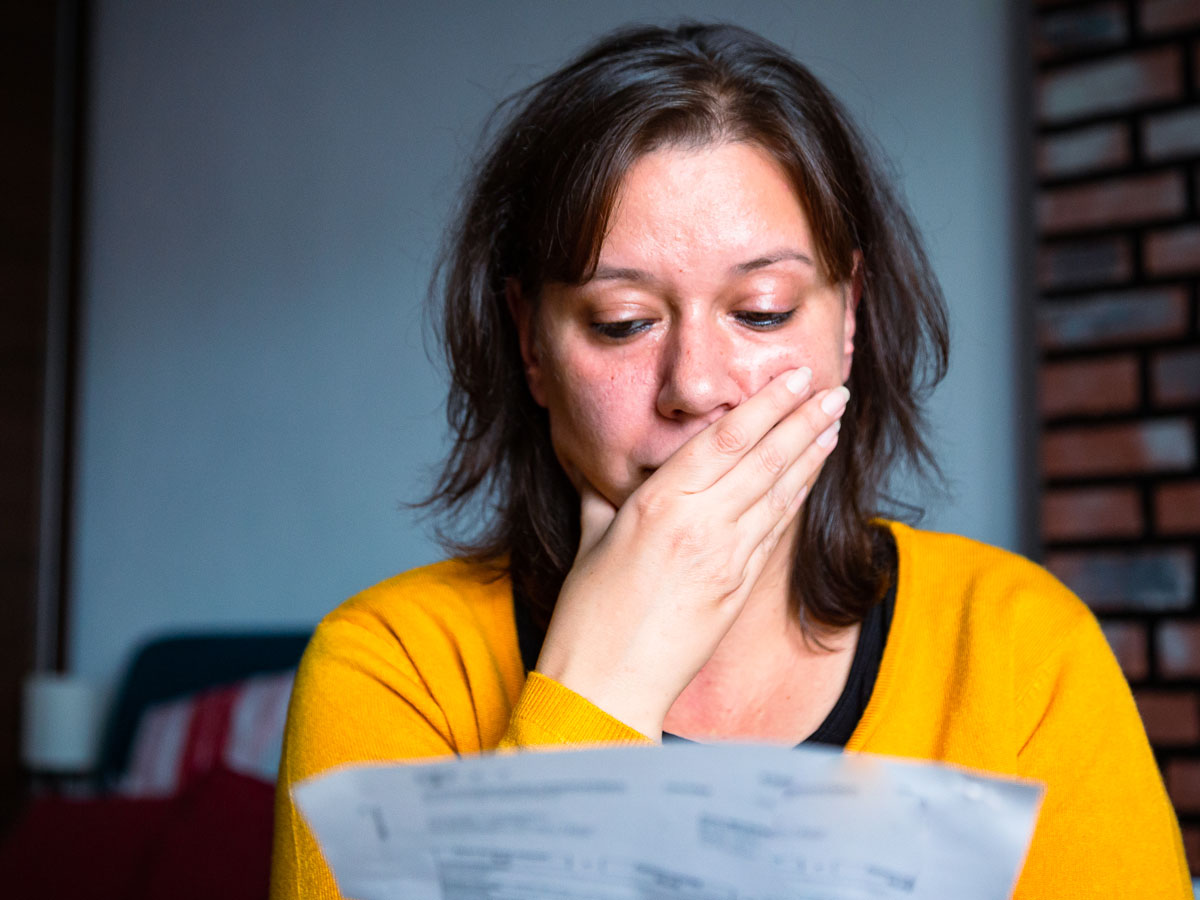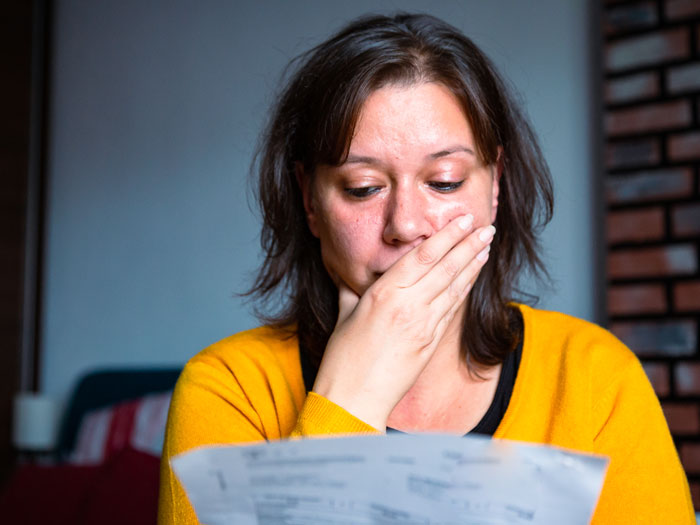
Expert advice to help you get ahead of filing for bankruptcy
 Don’t wait until you can no longer make your payments to seek professional help (Getty Images/coldsnowstorm)
Don’t wait until you can no longer make your payments to seek professional help (Getty Images/coldsnowstorm)
A growing number of Canadians are losing ground when it comes to balancing their budgets and keeping up with their bills.
Household debt is on the rise, sitting at $1.83 for every dollar of disposable income for Q3 2022 versus $1.77 a year ago according to Statistics Canada. “That is the highest seen since Q3 2018 when it was $1.85,” says Nancy Snedden, CPA, personal debt solutions leader, advisory, BDO Canada Limited.
Canadians are battling a perfect storm, she adds. “Many people saw a reduction in their income from the pandemic. And because of inflation, everything is costing significantly more than a year ago. Credit card use and new applications are increasing. So are delinquency rates as more people are missing their payments.”
Concerned about your finances? We asked the experts about what can be done when you think you might be heading toward bankruptcy.
1. RECOGNIZE WARNING SIGNS
There are a number of ways to tell if you are in over your head, says Snedden. One is being at the point where you cannot afford to pay more than the minimum payment on your debt each month. Another is if you are looking at retirement or are already retired and still have debt that will take more than three to five years to pay off.
Yet another red flag is your total debt. If your debt payments represent more than 40 per cent of your gross monthly income, you are courting financial trouble, Snedden says. “Canadians renewing their mortgages in 2023 will be facing fixed rates around five to seven per cent, which means a lot of people will no longer be able to afford the current debt they are carrying.”
2. SEEK HELP
If warning signs are appearing, you should seek advice as soon as possible to avoid compounding the problem. Several not-for-profit credit counselling agencies exist to provide highly qualified support at little or no cost. For more information, visit Credit Counselling Canada and Credit Canada.
Another potential resource is a licensed insolvency trustee (LIT). “The sooner you reach out, the more options you are going to have,” says Snedden. Don’t wait until you are getting collection calls or can no longer make your payments.”
As Sandy Lyons, CPA, business partner with Sparkplug Consulting Inc. in Lethbridge, Alta., points out, a number of agencies in the lending sphere—particularly in the credit union group—are working on microloan programs to help lower income individuals avoid high interest rate scenarios. “Some cities are offering rent subsidies to homeowners and renters to help them keep a roof over their heads,” he says.
In addition, Prosper Canada’s Benefits wayfinder provides listing of over 400 different benefit programs in Canada, Lyons says.
3. STOP THE SPIRAL
Whichever source(s) of help you seek, you will usually be advised to look for ways to bring your expenses more in line with your income and resources. For example, you might start by trimming discretionary spending, such as entertainment. Depending on your situation, you might need to consider more “drastic” options, such as selling a car or forgoing vacation, says Lyons.
In addition to cutting expenses, you might consider options to increase your income. For example, as Lyons explains, you may be able to take on a roommate or rent out your garage to someone if you’re not using it.
Selling off assets you don’t need or haven’t used for a long time can help free up some cash to cover off pressing expenses, he adds.
4. PAY BILLS ON TIME
Even if you are struggling, experts will likely tell you to make every effort to keep paying your credit card bills by the deadline. Otherwise, your credit score—and your interest rates—will be affected, making payments even more difficult.
“If your credit score goes down, your cost of borrowing goes up and this can be by a number of percentage points,” says Lyons.
Snedden agrees. “Someone might think it’s okay to skip one credit card payment, but even that could increase their interest rates. One customer of ours who missed a single payment saw their rate go up from 19 per cent to 24.99 per cent.”
One possible option for those who just cannot juggle credit card payments with other debts is debt consolidation. As Lyons explains, consolidation will allow you to pay off multiple debts with a single new loan. In certain cases, it could let you turn your 25 per cent interest credit card debt into a bank loan at a rate of interest below 10 per cent.
5. CONSIDER FILING A CONSUMER PROPOSAL
“When you simply can’t meet your current debt and there are no more rocks to turn over, the next step is a formal restructuring plan,” says Lyons.
At this point you will need to work with a LIT. “A licensed insolvency trustee will go through your entire financial picture, including your assets, your secured and unsecured debt, your income and expenses, and help you set up a budgeting plan,” says Snedden. “They will then hold additional meetings to make sure you are on track and are budgeting effectively.”
There may be some room to refinance at that stage, but if not, the next step is a consumer proposal, she explains. “A consumer proposal is a good option for people because it allows you to make a single monthly payment you can budget for and has less of an impact on your credit rating than a bankruptcy. The LIT will work with your creditors to propose a settlement on your debt based on your ability to pay. Depending on the creditor they may accept anything from seven to 80 cents on the dollar.”
Payments to creditors are managed by the trustee through a trust account. “The one advantage to this is that you only need 50 per cent of creditors to agree to the terms of the consumer proposal. The others will then be required to comply.”
Beyond that stage, personal bankruptcy is the only solution, says Lyons. [See 4 things to know before declaring personal bankruptcy]
TIME IS OF THE ESSENCE
No matter what solution you ultimately find, it’s best to reach out for help as soon as you can, Snedden says.
“You wouldn’t try to diagnose yourself if you are unwell; you would go to a doctor. You wouldn’t fix your own vehicle; you go to a mechanic. It shouldn’t be any different when it comes to finances. If you are struggling, reach out to a licensed insolvency trustee and find out what your options are to turn things around for yourself.”
GET ON THE RIGHT SIDE OF DEBT
Listen to the latest season of the Mastering Money podcast, which touches on debt-related topics, including the state of debt in Canada and debt traps to avoid. And find out how to get on the right side of debt before it gets ahead of you.